It’s For Art. Not Pixel Peeping. Lensbaby Spark 2.0 Review
We’re streaming daily on Apple Podcasts, Google Podcasts, Stitcher, Pocket Casts, and Spotify!
Lensbaby launched when founder Craig Strong literally took part of a shop vac hose to mount a vintage lens on his DSLR. The company’s first lens took on a similar look, with a plastic bumpy black tube creating a tiltable lens. The new Lensbaby Spark 2.0 mixes that heritage with a few modern updates, including mirrorless compatibility.
The Lensbaby Spark 2.0 shares a lot in common with the original Spark. It has a mount that’s now compatible with mirrorless systems like the Sony E, Canon RF, Nikon Z, Fuji X, and Micro Four Thirds as well as long-standing mounts including Canon EF, Nikon F, and Pentax K. The aperture now boasts 12 blades and a wider range, from f2.5 to f22. But the character of the original lens MacGyvered from a shop vac hose still stands. The question that photographers should ask before picking up any Lensbaby still stands, however. Does the character of the lens make up for lack of autofocus? Is the lens too niche to see much time out of the camera bag?
Pros and Cons
Pros
- Oozing with character
- Spectacular blur
- Fun to use
- Reminiscent of accordion fold cameras
- Compatible with Lensbaby’s interchangeable optics
- Compact and Lightweight
- Affordable
Cons
- Strong blue aberration in JPEGs
- Plastic build
- Manual focus
- Tricky to tilt
Gear Used
I tested the Spark 2.0 with the Nikon D850. The Spark 2.0 is compatible with Lensbaby’s optic swap system. It ships with the Sweet 50, which is the setup that I tested.
Tech Specs
Taken and summarized from Lensbaby’s own website:
- 6.5 oz
- 12 Aperture blades
- Made for every single camera mount except for Leica M
- 2 elements in one group
- 2 inches high and 2.5 inches wide
- 46mm filter thread
- Manual focus and close distance focusing of 15 inches
- Fixed f2.5 aperture

Ergonomics
The Lensbaby Spark 2.0 is a very minimal lens. The only control on the lens is the aperture ring. There are no other switches or even a focusing scale.
The barrel of the Lensbaby 2.0 reminds me of a miniaturized black plastic corrugated drainage pipe. Those bumpy black sides are essential to the lens — the barrel flexes to focus and tilt the “sweet spot” of sharpness away from the center.
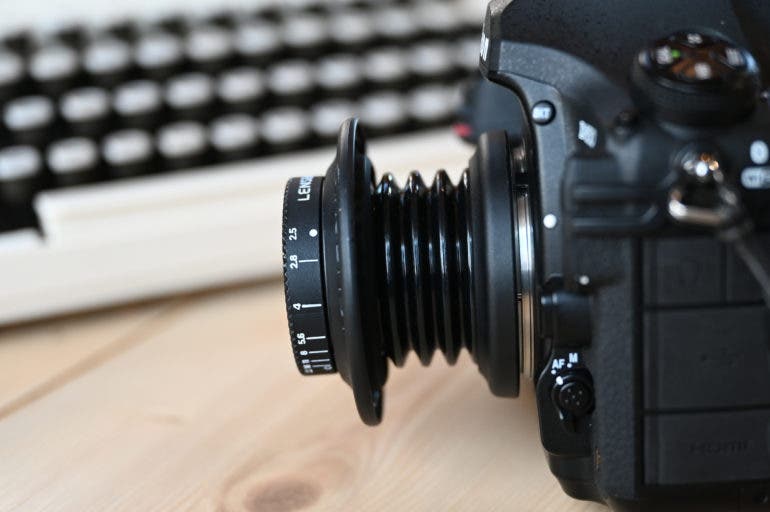
The front element of the lens, the Sweet 50, twists to adjust the aperture from f2.5 to f22 with a satisfying click. Making the $200 plastic lens feel a little fresher, the Lensbaby and Spark names are cut into a round plastic piece at the front. This design feature gives the lens a bit more character.
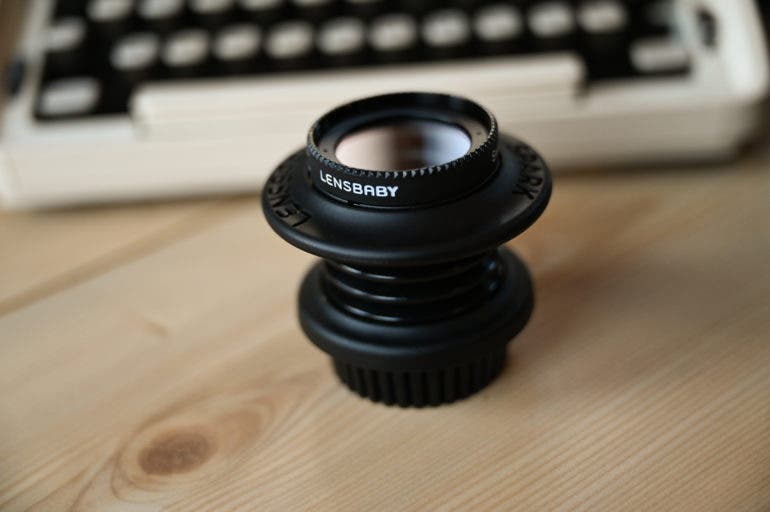
The rear of the lens has only a simple dot on the metal connector to line up the lens with the mount. A dot on the outside would help mounting the lens a little quicker and simpler. The lens doesn’t have an electronic connection with the camera, so there are no lens corrections applied to the JPEGs and features like metadata are lost.
Build Quality
For around $200, don’t expect much in the way of build quality. Most of the lens is constructed from plastic, except, of course, the glass. The plastic feels lighter than even the construction of most basic kit lenses. Even the metallic lens mount feels rather lightweight.
The plastic ring at the mount feels a little fragile, twisting the lens on. The twisting aperture ring feels a bit sturdier, though still made from plastic. I don’t mind the plastic corrugated barrel because that’s essential to the lens’ flexibility, both literally and figuratively.
The perk of the plastic construction is that this lens weighs next to nothing — 4.7 ounces. Of course, I wasn’t expecting metal or weather-sealing for the price, so the build quality certainly isn’t a deal-breaker.

Focusing
Like all Lensbabies, the Spark 2.0 is a manual focus lens. But, unlike most manual focus lenses, there’s not even a focus ring. The Spark 2.0 instead focuses by physically bringing the front lens element closer and farther from the subject. This is done by pushing and pulling on the lens, taking advantage of that flexible lens barrel. The barrel of the lens can also be tilted to change where that center sharp point is located.
Focusing the Spark is incredibly fun. There’s something quite satisfying about moving the lens elements yourself with just a slight touch. The old accordion fold cameras focused much the same way. The Spark 2.0 takes that classic focusing method and mounts it on modern mirrorless and DSLR cameras.
Lensbaby’s manual focus lenses always force me to slow down and put more thought into the shot. But, you can’t change the nature of manual focus optics. It takes patience and isn’t ideal for moving subjects or any projects on a time crunch. Getting the lens perfectly focused when shooting wide open is an exercise in patience.
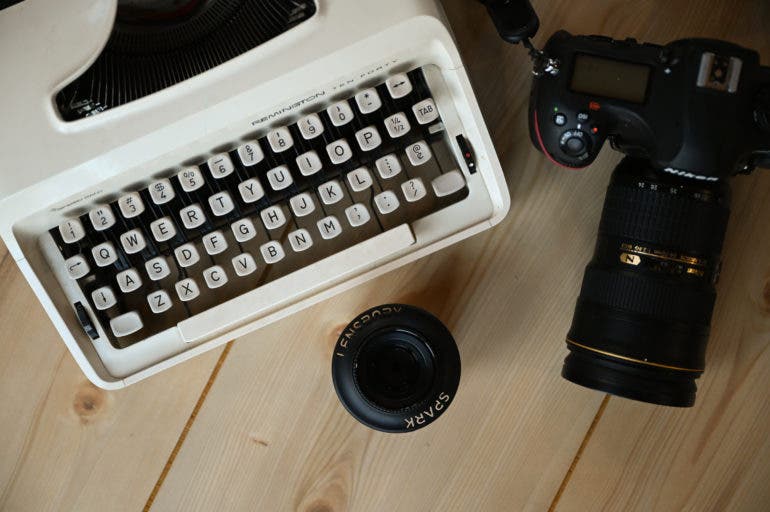
Ease of Use
I can easily see the Lensbaby Spark 2.0 as part of a class on how cameras work. Instead of letting an autofocus motor or even a ring do the work, the photographer is doing all the work. That’s great for a hands-on way of becoming more intimate with a camera lens’s inner workings. The typical autofocus motor moves the glass pieces closer or farther from the image sensor. With the Spark, you do that with your own finger-power. The aperture is also easily visible from the front of the lens, another potential learning tool.
Because the Lensbaby Spark 2.0 isn’t your typical camera lens, I’d suggest spending some time playing with the lens before embarking on any serious projects. It’s not terribly complex to learn or use, you just need some patience and a willingness to experiment.
The most difficult part of using the lens is moving that center sweet spot. First, tilting involves re-focusing the lens, which is difficult to do while tilted, especially when shooting wide open. Second, if you tilt too far, you’ll see the barrel of the lens in the corner of the image. While you can move that sweet spot of focus, it takes some time and patience to get it perfect.
Image Quality
Images from the Lensbaby Spark 2.0 are oozing with character. With intense blur wide open, images easily take on a surreal, dream-like feel. Stepping down the lens pushes that blur effect farther away from the center and still helps draw the eye but without so much of that dream-like softness.
Bokeh

Made for soft edges, the Lensbaby Spark 2.0 generates plenty of soft blur that draws the eye towards the subject. At f2.5, roughly 90 percent of the image is blurred, a gradual transition from a soft blur to one so strong objects are obliterated. Shooting at f4 makes it easier to get a sharp subject, yet still has plenty of that strong edge blur. At f8, that edge blue is much softer, and by the narrowest apertures, the edge blur effect is nearly non-existent. Blurred points of light have soft edges. The bokeh is round at the center of the image but can become more oblong at the edges.
Sharpness
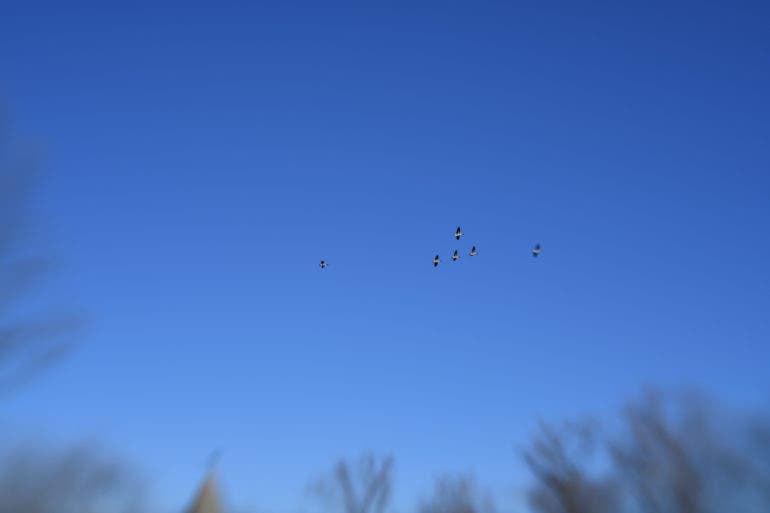
Lensbaby embraces imperfections — the entire line-up, in general, isn’t made for pixel peepers. If you take the time to get the focus perfect, the center is acceptably sharp. It’s not the pro-level-lens-sharpness, but comparable to an average kit lens. Sharpness does, however, take plenty of patience because of the manual focusing and the fact that, wide open, 90 percent of the image has that sot blur effect.
Chromatic Aberration

The Spark 2.0 suffered from some heavy blue fringing when taking photos of thin backlit subjects like tree branches. This fringing was most obvious in the JPEGs — since there’s no connection from the lens to the camera, the camera won’t automatically apply lens corrections as with the typical JPEG. The fringing was easily removed in post, with much of it taken care of through camera profiles. This is a lens that photographers will definitely want to shoot in RAW with.
Color Rendering
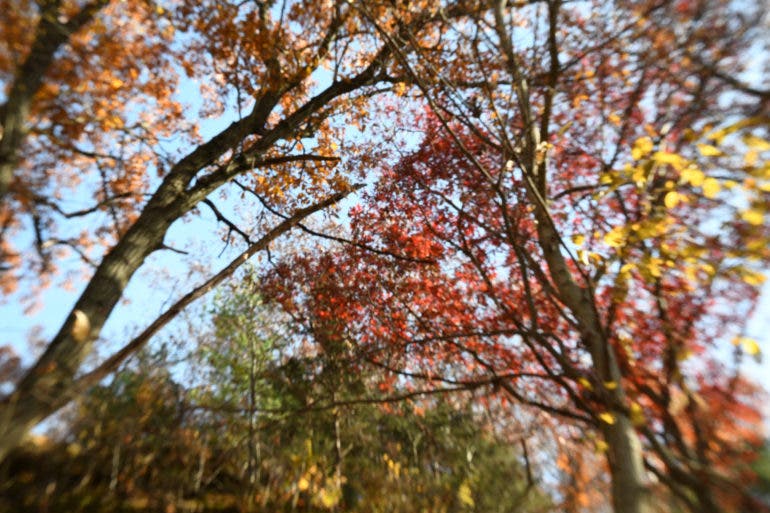
Paired with the D850, the Spark 2.0 tended to favor a bit cooler white balance. When corrected for white balance, colors were just a tad less vibrant than when paired with a 24-70mm f2.8 lens. The biggest issue to the Spark’s coloring is that heavy blue fringing, but again, is easily corrected when shooting in RAW.
Additional Image Samples

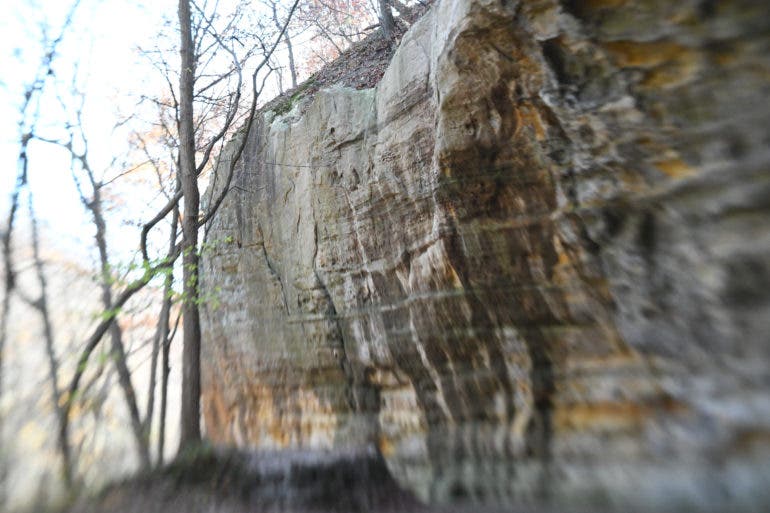

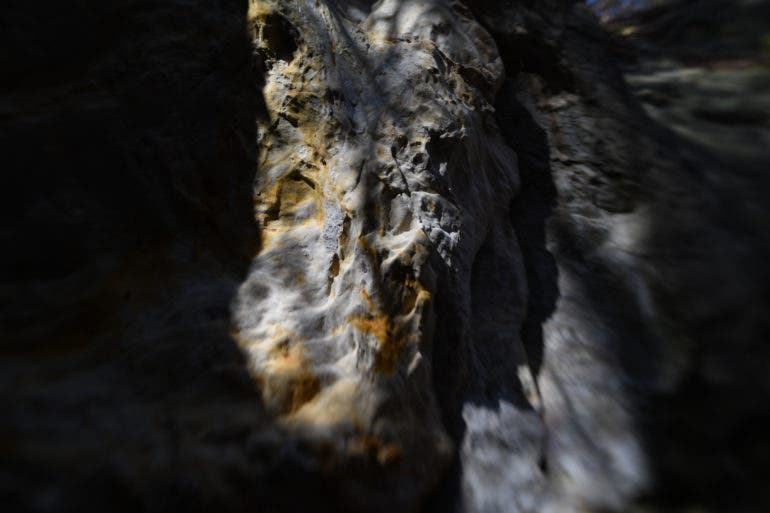


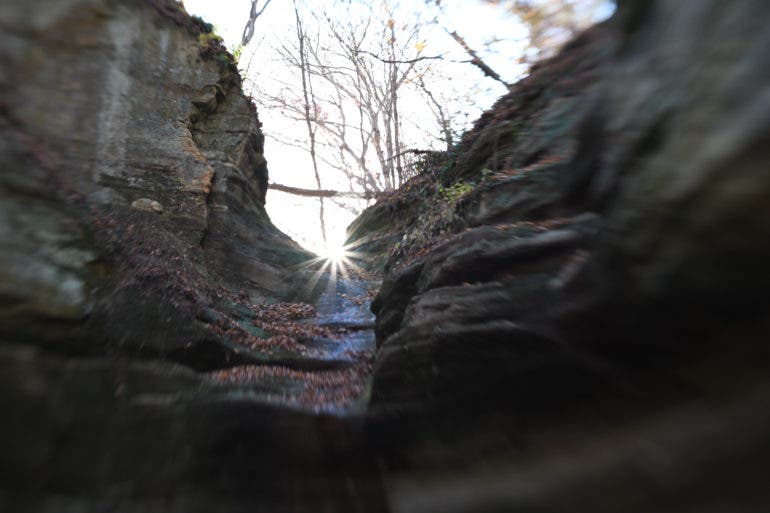





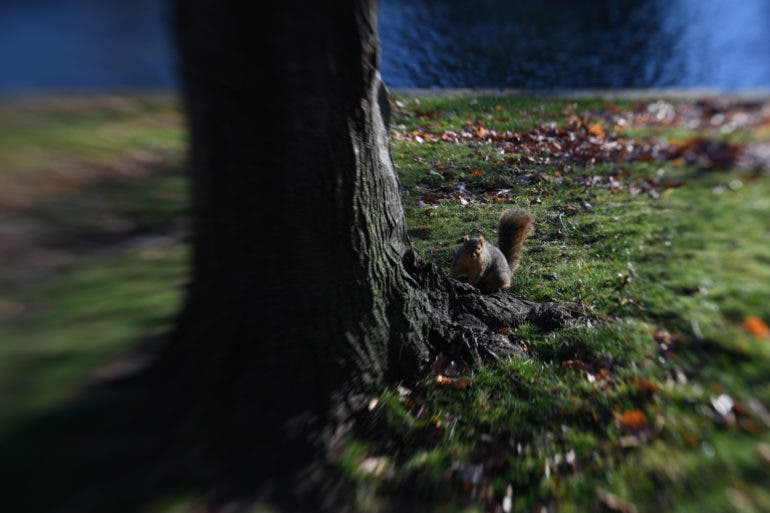


Conclusions
Likes
- There’s plenty character to go around — and make your shots less like everyone else’s.
- Focusing the flex tube is a blast.
- The edge blur is gorgeous.
- Small and light, it’s not going to take up a lot of space in your camera bag.
- It’s incredibly affordable.
Dislikes
- It’s manual focus. You’ll need to be patient with this lens.
- Focusing with the lens tilted requires even more patience.
- The build quality is cheap.
- Blue fringing is overwhelming in JPEGs.
The Lensbaby Spark 2.0 is just dripping with character. The edge blur is fantastic for photographers aiming for a dream-like look, while the effect can easily become less dramatic by narrowing the aperture. The flexible barrel is both challenging and fun. And while manual focuses lenses have their downside, shooting with a Lensbaby always forces me to slow down and put more thought into the image.
Like other Lensbabies, the Spark 2.0 is for art, not pixel peeping. It generates quite a bit of blue fringing and it’s made from lightweight plastic. Getting the lens focused while it’s tilted is also tricky to do.
The Lensbaby Spark 2.0 is a good creative lens, but it’s niche glass. If you want a dream-like look, you’re going to want this lens in your bag. But, you’ll need to be patient enough to get it perfectly focused and willing to work on the RAW files to avoid some JPEG issues.

For character more than image quality, I’m giving the Lensbaby Spark 2.0 four out of five stars. Want one? Head over to Amazon and grab one for $159.